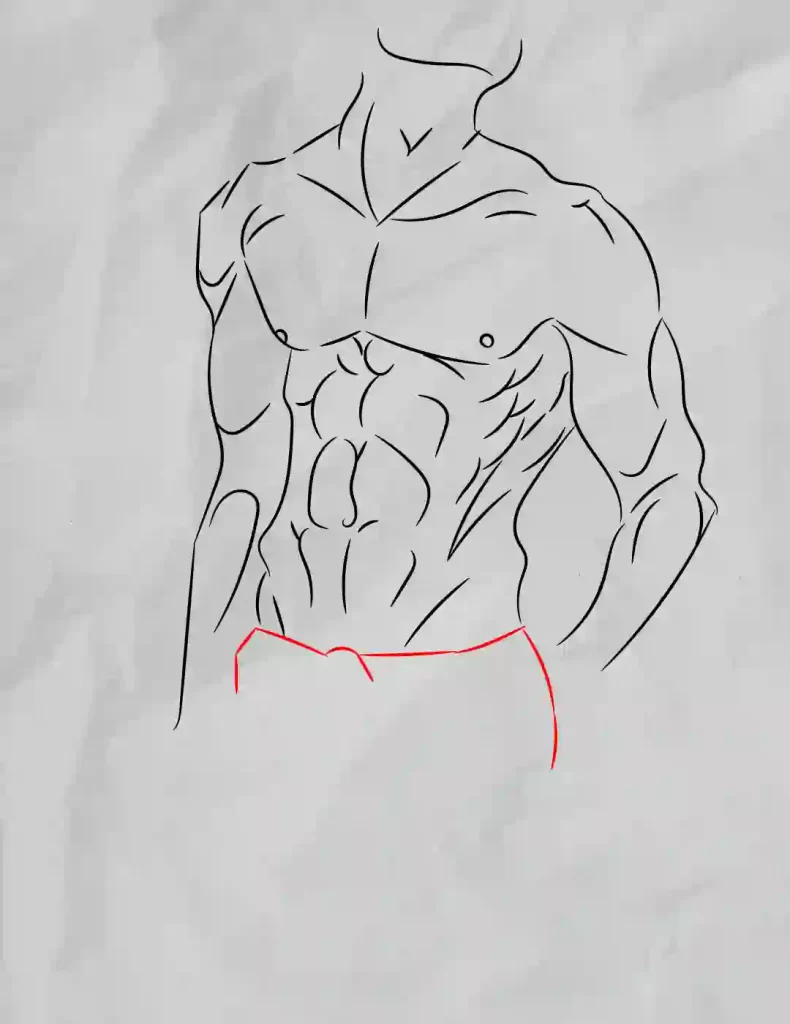With its intricate skeletal structure and complex array of muscles, the human form poses a formidable challenge for even seasoned artists. However, mastering the art of human drawing can open up new realms of artistic expression, allowing you to capture the beauty and diversity of the human spirit in vivid detail.

Image: storiespub.com
In this comprehensive guide, we’ll embark on a step-by-step journey that will empower you with the knowledge and techniques needed to draw humans accurately and expressively. From the basics of proportion and anatomy to the intricacies of shading and detail, we’ll cover everything you need to know to create captivating human figure drawings.
Unveiling the Human Form
The key to drawing humans realistically lies in understanding the underlying anatomy. The human body consists of a framework of bones, muscles, and joints that work together harmoniously to enable movement and expression. By studying the proportions and structures of the human form, you can create drawings that convey a sense of dynamism and authenticity.
Begin by sketching the basic shapes that define the human body. Use ovals for the head and torso, circles for the joints, and lines for the limbs. Gradually add details such as the eyes, nose, mouth, and fingers. As you progress, pay close attention to the proportions and relationships between these elements. This foundation will serve as the building blocks for your future human figure drawings.
Mastering the Art of Proportion
Accurate proportions are crucial for creating believable human figures. In classical art, the human body is often depicted according to the “Vitruvian Man” proportions, as described by Leonardo da Vinci. This involves dividing the body into equal segments, with the head being the primary unit of measurement.
Remember that proportions can vary depending on age, gender, and individual characteristics. To achieve a realistic representation, observe a live model or study reference photos. Pay attention to the relative lengths of the limbs, the size of the head in relation to the body, and the curves and angles created by the skeleton and muscles.
Shading and Detail: Bringing Life to your Drawings
Once you have mastered the basics of proportion and anatomy, the power of shading and detail will enable you to create truly expressive human figure drawings. Shading adds depth and dimension to your drawings, bringing the human form to life.
Use different pencil grades to achieve a range of tones. Darker shades create shadows and define contours, while lighter tones highlight areas of light. Experiment with blending techniques to create smooth transitions between shades. Details such as wrinkles, hair, and clothing textures add character and individuality to your drawings.

Image: sceneryvqg.blogspot.com
Stay Updated with the Latest Trends
The world of art is constantly evolving, and so is the field of human figure drawing. Stay up-to-date with the latest trends and developments to enrich your artistic repertoire. Follow contemporary artists on social media, attend workshops and exhibitions, and study the works of masters to gain inspiration and enhance your skills.
By keeping abreast of the latest trends, you’ll expand your technical abilities, refine your artistic vision, and remain at the forefront of human figure drawing.
Tips and Expert Advice for Aspiring Human Figure Artists
Becoming a proficient human figure artist requires dedication, practice, and a willingness to learn from experienced professionals. Here are some insightful tips and expert advice to guide you on your artistic journey:
– **Start with the basics:** Don’t rush into complex human figure drawings. Begin by practicing basic shapes, anatomy, and proportions. This solid foundation will establish a strong base for your future endeavors.
– **Observe the world around you:** Pay close attention to the people you encounter. Study their postures, gestures, and expressions. This keen observation will provide you with an inexhaustible reservoir of inspiration.
FAQs on Human Figure Drawing
1. What are the essential tools for human figure drawing?
– Pencils of various grades (2B-8B)
– Drawing paper or sketchbook
– Eraser
– Charcoal or chalk pastels (optional)
2. How do I find a good reference model?
– Ask friends or family members to pose
– Attend figure drawing workshops or classes where models are provided
– Utilize online resources like Posemaniacs or SketchDaily for reference images
3. How long does it take to become a skilled human figure artist?
– Skill development varies widely depending on personal dedication and practice time.
– With consistent practice and dedication, significant improvement can be achieved within months to years.
How To Draw A Human Step By Step
Conclusion
Embarking on the journey of human figure drawing can be both challenging and incredibly rewarding. By mastering the principles of proportion, anatomy, shading, and detail, you’ll unlock the power to create compelling and expressive human forms. Remember to stay updated with the latest trends, seek inspiration from the world around you, and embrace the guidance of experienced artists.
So, are you ready to embark on this fascinating artistic adventure? Let your imagination soar, embrace the challenge, and turn your passion for human figure drawing into a lifelong pursuit of beauty and expression.

/GettyImages-1303637-two-way-mirror-57126b585f9b588cc2ed8a7b-5b8ef296c9e77c0050809a9a.jpg?w=740&resize=740,414&ssl=1)



